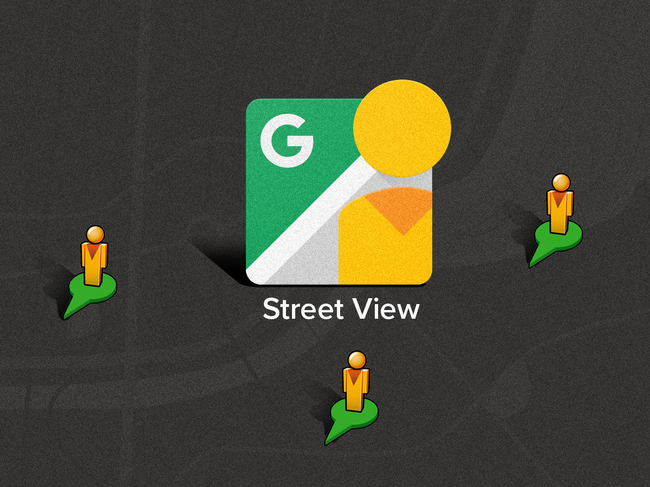 ETtech
ETtechThe internet search leader on Wednesday launched the feature – already available in more than 100 countries - across 10 cities in India, enabling users to get a 360-degree view of any iconic destination, restaurant or street.
Google, which typically collects street-level images through cars and bikes fitted with cameras, is offering the service in partnership with Tech Mahindra and Genesys International.
The service has gone live in Bengaluru, Chennai, Delhi, Mumbai, Hyderabad, Pune, Nashik, Vadodara, Ahmednagar, and Amritsar.
The feature, available under Google Maps, is expected to help real estate companies and travel firms as well as aid in better navigation for users.
Discover the stories of your interest

According to India’s geospatial policy, released last year, geospatial data of a spatial accuracy/value that is below one metre horizontally and three metres vertically can be collected only by entities controlled by Indian citizens.
“This is the first time in the world that Google Street View is being brought to life completely by local partners,” Miriam Daniel, vice president - maps experiences, Google, told ET. “They (the partners) have covered 150,000 kilometres in India. We plan to expand this to 50 cities by the end of this year.”
Google Maps will also show information on speed limits shared by traffic authorities, starting with Bengaluru and Chandigarh.
It will also provide information on road closures and incidents on Google Maps across eight cities, including Delhi, Hyderabad, Chandigarh, Ahmedabad, Kolkata, Gurugram, Bengaluru, and Agra, to help people avoid congestion zones.
The US-based technology behemoth has also collaborated with the Central Pollution Control Board to make authoritative air quality information available on Google Maps.
Users will be able to access this information by tapping the ‘Layers’ button at the top right and selecting the ‘Air Quality’ option.
Daniel said Google would publish Street View’s Application programming Interface to local partners. Its API has been available to global partners for a while.
Genesys International's partnership with Google is intended to increase the range of Street View to 1 million km by the end of the year. Tech Mahindra will be the logistics service provider for Google.
Desi alternative
How Indian players are taking on Google Maps

Meanwhile, the Indian rival to Google Maps, MapmyIndia has also launched its own 360-degree panoramic street view offering called Mappls RealView.
The service will be available on the digital mapping firm's consumer mapping portal Mappls on the web and Mappls App on Android and iOS.
“As an Indian company competing with a monopolistic big-tech foreign giant for the consumer market,” MapmyIndia’s aims to show how indigenous, home grown deep-tech companies are giving “advanced capabilities to users in the areas of maps,” CEO Rohan Verma told ET.
“We have a much larger and more advanced RealView and our 3D metaverse coverage helps both consumers and enterprises. This is truly indigenous,” Verma said.
On its partnership with Google, Tech Mahindra said it was leveraging the geospatial guidelines for its project Gullyfy (Gully means street in Hindi) to collect terrestrial data across India.
“We will be using our electric rickshaws (which have a narrow body) mounted with cameras to navigate remote corners and capture street imagery,” Birendra Sen, business head, business process services, at Tech Mahindra, told ET.
“We are looking forward to 700,000 km of data collection across the country over the next couple of years. We have started with Andhra Pradesh and want to cover 19 states by May 2023. The ultimate objective is to license this data back to Google,” Sen said.
Its parent company Mahindra and Mahindra is the logistics service provider, while it has partnered with another company for the specialized cameras that will capture the high-resolution street imagery.
Genesys International said it had currently mapped 150,000 “unique kilometres.”
To be sure, Mumbai is spread across 5,000 unique kilometers.
“Over the next 12 months, Genesys is working to cover all urban India street imaging, spanning over a million kilometres, making this the largest street imaging exercise in the country,” Sajid Malik, managing director of Genesys International, told ET.
Monuments project
The Archaeological Survey of India in October 2013 collaborated with Google India to create 360-degree online panoramic imagery of 100 nationally important monuments like the Taj Mahal, Humayun's Tomb, Khajuraho and the Ajanta and Ellora caves, among others.
The internet leader and the Ministry of Culture had signed a memorandum at the Qutub Minar complex. The collaboration created virtual walkthroughs of these sites, helping everyone view heritage sites online.
Google’s 'Street View Trekker' has been used to create "virtual walkthroughs" for sites like the Eiffel Tower in France, Grand Canyon in the United States, and Mt. Fuji in Japan, among others.
Google India and the culture ministry had previously collaborated to create virtual walkthroughs for the National Gallery of Modern Art (NGMA) and the National Museum.
Google has also partnered with Bengaluru traffic police to help optimize traffic light timings. The pilot resulted in an almost 20% reduction in congestion across all major intersections.
“We will be scaling this to all of Bengaluru and extending this pilot to Kolkata and Hyderabad as well in the coming months,” Daniel said.
“We are happy to share that four Indian cities, Bengaluru, Chennai, Pune and Aurangabad, are now using transport emissions data from Environmental Insights Explorer (EIE) to develop their Climate Action Plans. Today, we publicly launched Aurangabad’s EIE data, making it accessible to research organizations,” she added.
















 Get Unlimited Access to The Economic Times
Get Unlimited Access to The Economic Times
